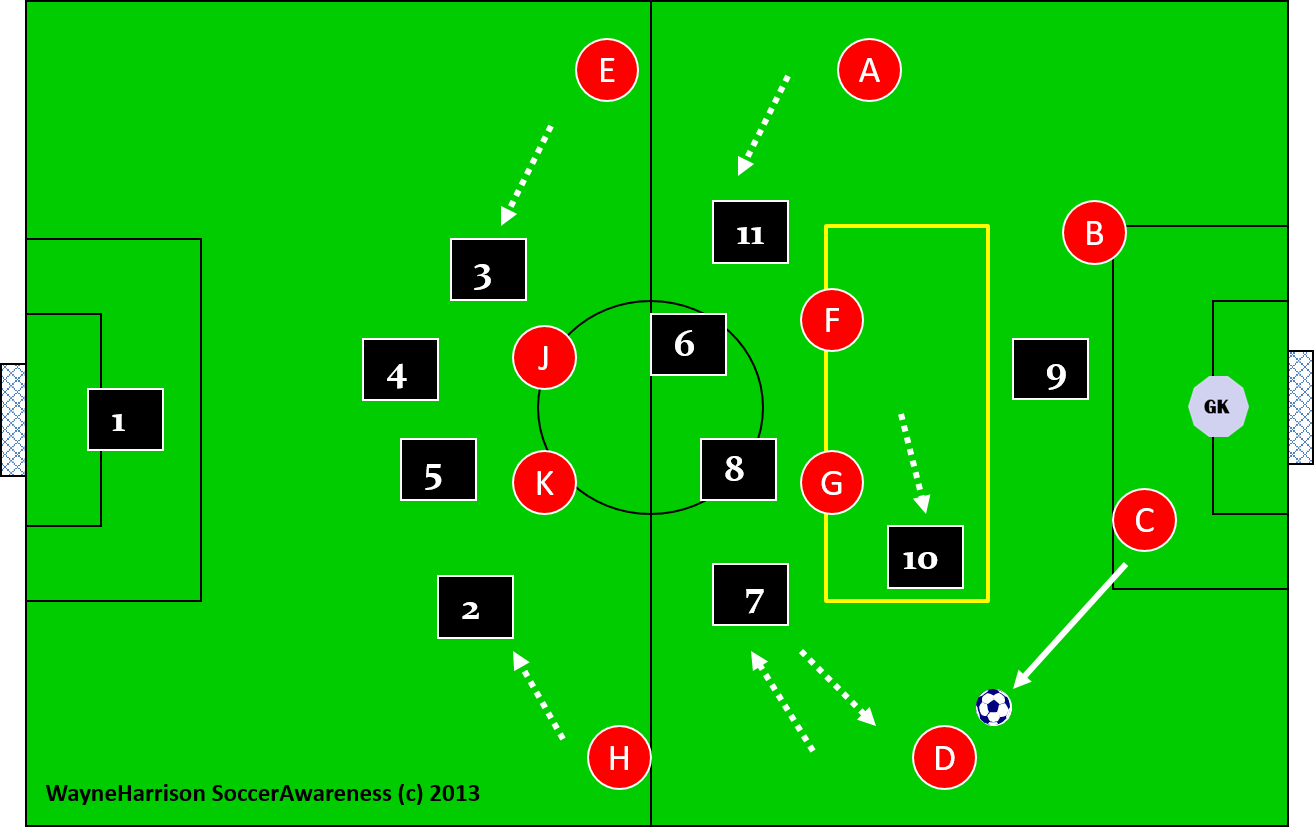Defensive Positioning to Fix in Defensive Team Shape
/The following excerpt comes from Soccer Awareness eBook 30: Common Mistakes to Correct at 11 v 11; Identifying and Solving Common Real Game Situation Problems in the Training Environment.
This is a different way to look at the game, rather than highlighting what we need to do well, it shows what often goes wrong and how to fix it. These are many situations I have found happen in top level games. How many of these problems do YOU experience with your team?
Many of the defensive problems as you will see can EASILY be fixed just with good 1 on 1 or unit pressing. Also defensive tactical positioning is covered; as is improvements in our attacking play. A major improvement is needed though in COMMUNICATION at youth level to help fix all errors in most cases. Preview
Defensive Positioning to Fix in Defensive Team Shape
Teams should have 2 basic shapes, an attacking one and a defensive one; wide and long on offense, short and tight on defense. The differences between each should be significant in terms of spacing between players. A problem that occurs is defensive team shape is not short and tight enough and it allows opponents too much time on the ball.
Here is an illustration of defensive positioning to fix. Opponents spread out and our players are FAR TOO WIDE. They mark players not space. This pass is just an example of what we allow that we should stop.
Now, this is how it should set up. All Players tuck in and mark space. Almost inviting (C) to pass to (D) so (7) can press quickly. It may be only 5 to 10 yards of movement but it is vital so we are much more difficult to play through.
Offensive Midfield Player is too Wide
In this example, our opposite midfield player is too wide. This happens too much. We want our players defensively tight close to the ball. This also is a really common one easily fixed. Often fullback (3) does the same as shown.
Here's how it looks when our opposite midfield player tucks in. We want to try to overload the immediate area of the ball, actually condense much more than you might ever imagine. Here a 5 v 3 in our favor. (7) stops the pass to (H).

















UPDATED AND IMPROVED
Identifying and Solving Common Real Game Situation Problems in the Training Environment
This is a different way to look at the game, rather than highlighting what to do well; and how to do it, we work back to show what often goes wrong and then how we can fix it. These are many situations we have found happening in ALL levels of games.
Some may seem so insignificant we don’t see or realize the importance of them, but they may be the catalyst to a bigger problem in the next phase of play. How many of these problems do YOU experience with your team?
This eBook is 184 pages outlining 30 different real game issues and how they can be fixed before they happen. Interactive table of contents links to each section.